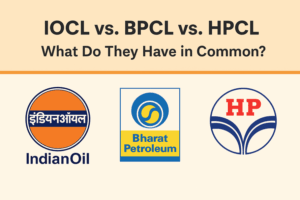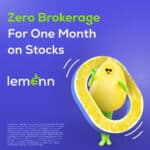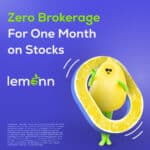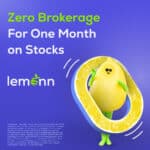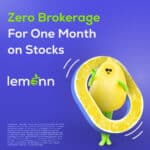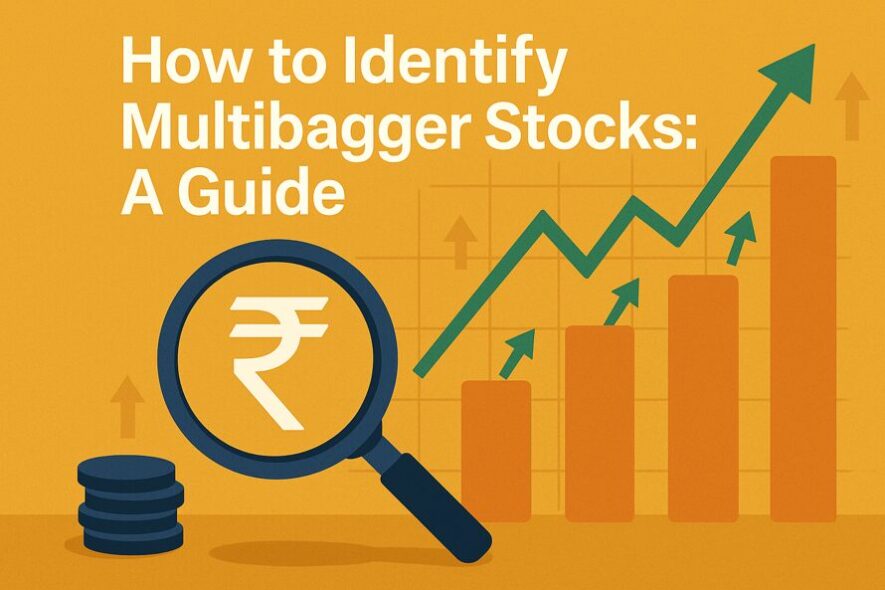
What Are Multibagger Stocks?
If you’ve spent even a few weeks in the stock market, chances are you’ve heard someone boast, “I caught a multibagger.” It’s the holy grail of investing. These are stocks with the potential to deliver exceptional returns, multiplying an investor’s initial investment many times over.
But let’s be clear about the logic. A multibagger isn’t magic. It’s not about chasing hype or sheer luck. These are companies that quietly grow year after year until the market wakes up and realizes the story it missed. By then, early believers are already sitting on outsized returns.
Definition and Origin of the Term
Interestingly, the word “multibagger” didn’t come from Dalal Street. It came from Peter Lynch, the legendary American fund manager. He borrowed the term from baseball, where a “two-bagger” means hitting a double. Applied to stocks, a “two-bagger” doubles your money, a “ten-bagger” multiplies it tenfold, and so on.
In India, the phrase stuck like glue. For retail investors, multibaggers serve as proof that patience and astute analysis can outshine luck.
Historical Examples of Multibaggers in India
The Indian market has plenty of real-life stories. Infosys in the 90s was just another IT company, until outsourcing became a mega-trend. Early investors saw their holdings grow hundreds of times. Eicher Motors, which many thought was finished, revived through Royal Enfield and created unbelievable wealth.
Then there’s Bajaj Finance, a once-small NBFC that evolved into a financial powerhouse. And Avenue Supermarts (D-Mart), which turned grocery retail into one of the hottest investments of the last decade. These aren’t fairy tales. They’re case studies in spotting potential before the herd does.
Key Traits of a Multibagger Stock
So what makes these stocks special? Here’s where patterns matter. When you study past winners, you notice that certain traits show up repeatedly.
Strong Revenue and Profit Growth
Numbers tell the story first. Multibaggers almost always display consistent growth in sales and profits. Not one great year, but a string of them. Take Asian Paints; decade after decade, it has expanded revenues while maintaining healthy margins. Growth that compounds for 10–20 years creates magic.
Scalable Business Model
Multibaggers don’t stay trapped in small ponds. They have models that can scale without breaking. Titan wasn’t content selling watches; it moved into jewelry and eyewear. HDFC Bank scaled by opening branches across India. A scalable model is like fuel for compounding.
Low Debt and Healthy Cash Flow
Heavy debt is like a ball and chain. It drags companies down during downturns. Multibaggers typically maintain modest debt and strong cash flows.
Competitive Moat and Market Leadership
The word “moat” gets thrown around a lot, but it matters. A moat could be a strong brand (Maruti), distribution reach (Asian Paints), or patents (Sun Pharma). The moat shields the business from copycats and protects profits for decades.
Undervalued by the Market (Low P/E or P/B Ratios)
Here’s the kicker: most multibaggers don’t look like multibaggers at the start. They’re undervalued, overlooked, or misunderstood. The market hasn’t caught on yet. Once earnings pick up and sentiment shifts, re-rating drives explosive returns.
How to Analyze and Identify Potential Multibaggers
This is where the real detective work begins. Spotting a multibagger is about layering fundamentals, management insights, and industry trends.
Fundamental Analysis (EPS, ROE, Debt/Equity Ratio)
Start with the basics:
- Is EPS growing steadily year after year?
- Does the company have an ROE above 15–18%, showing efficient capital use?
- Is the debt-to-equity ratio manageable, ideally under 1?
These aren’t silver bullets, but together they form a strong base. Multibaggers almost always shine on these metrics long before the market rewards them.
Management Quality and Corporate Governance
You can’t separate multibaggers from management. A visionary leadership team with clean governance practices is often the difference between a 2x and a 20x stock. HDFC Bank’s Aditya Puri, for example, set a gold standard in execution and governance.
Look for promoters who walk the talk, avoid shady practices, and prioritize long-term value over short-term optics.
Future Industry Potential and Market Trends
A company can’t outrun its industry forever. The biggest multibaggers usually align with long-term megatrends. IT in the 90s, consumption in the 2000s, and renewables and fintech today. If the tide itself is rising, even average boats rise. But the best-positioned companies soar.
Insider Buying and Promoter Holding Patterns
Insiders know the business better than anyone. When promoters quietly increase stakes or insiders buy shares, it signals confidence. Combine that with rising institutional interest, and you often see the early footprints of a multibagger journey.
Tools and Resources for Screening Multibagger Stocks
With thousands of companies listed, where do you even start? That’s where smart tools come in handy.
Stock Screeners and Filters
Platforms like Screener.in or Moneycontrol let you set filters for growth, ROE, margins, and debt. With the right filters, you cut noise and focus on companies that tick the boxes.
Analyzing Annual Reports and Investor Presentations
Annual reports are boring to some, but actually, they are treasure troves. They show you the management’s vision for the future, the challenges they face, and where the cash is going. Investor presentations add extra color with visuals and strategy breakdowns.
Following Analyst Reports and Market News
Brokerage reports, quarterly results, and even good financial journalism often point toward emerging leaders. They are not the gospel truth, but they act as guideposts for where to dig deeper.
Time Horizon and Risk Factors in Multibagger Investing
Here’s the truth: even if you pick the right stock, you won’t see multibagger returns unless you hold long enough and can stomach the volatility.
Patience and Long-Term Holding
Multibaggers are built on time and compounding. A stock may take 5–10 years to realize its potential fully. Investors who booked profits early in Infosys missed the real magic. Patience is the secret sauce.
Volatility and Market Cycles
Even the strongest multibaggers stumble. A 40% drop in the short term doesn’t kill the story. If the fundamentals remain intact, cycles eventually turn. The trick is conviction during storms.
Exit Strategy and Booking Profits
That said, holding forever isn’t always smart. Having an exit strategy, trimming positions at milestones, or reallocating gradually, locks in gains while letting the story play out.
Common Mistakes to Avoid While Picking Multibaggers
Learning from mistakes is often faster than chasing success. Avoid these traps:
Chasing Hype Without Research
Every bull run has its heroes. But hype-driven picks rarely sustain. Real multibaggers are usually discovered quietly, not in WhatsApp groups or TV shouting matches.
Ignoring Valuation and Financials
Even great stocks can disappoint if purchased at sky-high valuations. Entry price matters. Overpaying limits your upside, regardless of the business’s quality.
Overconcentration in One Sector or Stock
Pinning everything on one idea magnifies risk. Balance matters. Even pros spread bets across themes, so one misstep doesn’t sink the ship.
Conclusion
The hunt for multibagger stocks is what keeps markets exciting. That is what keeps investors up at night—scanning reports, tracking trends, and debating valuations late into the night.
But remember this: multibaggers aren’t magic bullets. They’re businesses with scalable models, visionary leaders, healthy financials, and industries that support long-term growth. Add undervaluation and patience to that mix, and you have the formula for exponential returns.
Every iconic multibagger in India, from Infosys to Bajaj Finance, started small, ignored, and undervalued. The investors who spotted the spark early and held on became the storytellers we admire today.
FAQs:
Q. How long does it take for a stock to become a multibagger?
Multibaggers don’t happen overnight. In most cases, it takes 5–10 years of steady compounding for a stock to multiply several times. The journey depends on industry growth, business execution, and how early you spotted the story. Think of it like planting a tree, and the real shade comes with time.
Q. Are small-cap stocks more likely to be multibaggers?
Yes, history shows that many multibaggers start as small-caps. Smaller companies have more room to expand and surprise the market. But that doesn’t mean every small-cap turns into a winner. The fundamentals still need to be solid.
Q. Can penny stocks become multibaggers?
They can, but it’s rare. A few penny stocks have transformed into giants, but most vanish before making a mark. For one success story, dozens crash out. That’s why research and quality checks matter more than price tags.
Q. What is the risk of investing in potential multibaggers?
The biggest risk is volatility. Multibaggers often face steep corrections on the way up. Another risk is misjudging the company; if the fundamentals weaken, the story can collapse. Patience and diversification are key to balancing these risks.
Q. Do multibagger stocks pay dividends?
Some do, some don’t. In early growth years, companies usually reinvest profits back into the business, so dividends stay low. As they mature, they often start rewarding shareholders with payouts. Bajaj Finance, for example, began small but gradually increased dividends as it scaled.
Q. How many multibaggers should I have in my portfolio?
There’s no magic number. Many seasoned investors suggest aiming for a handful of well-researched candidates instead of chasing dozens. Even one or two true multibaggers can transform a portfolio, provided you hold them long enough.


